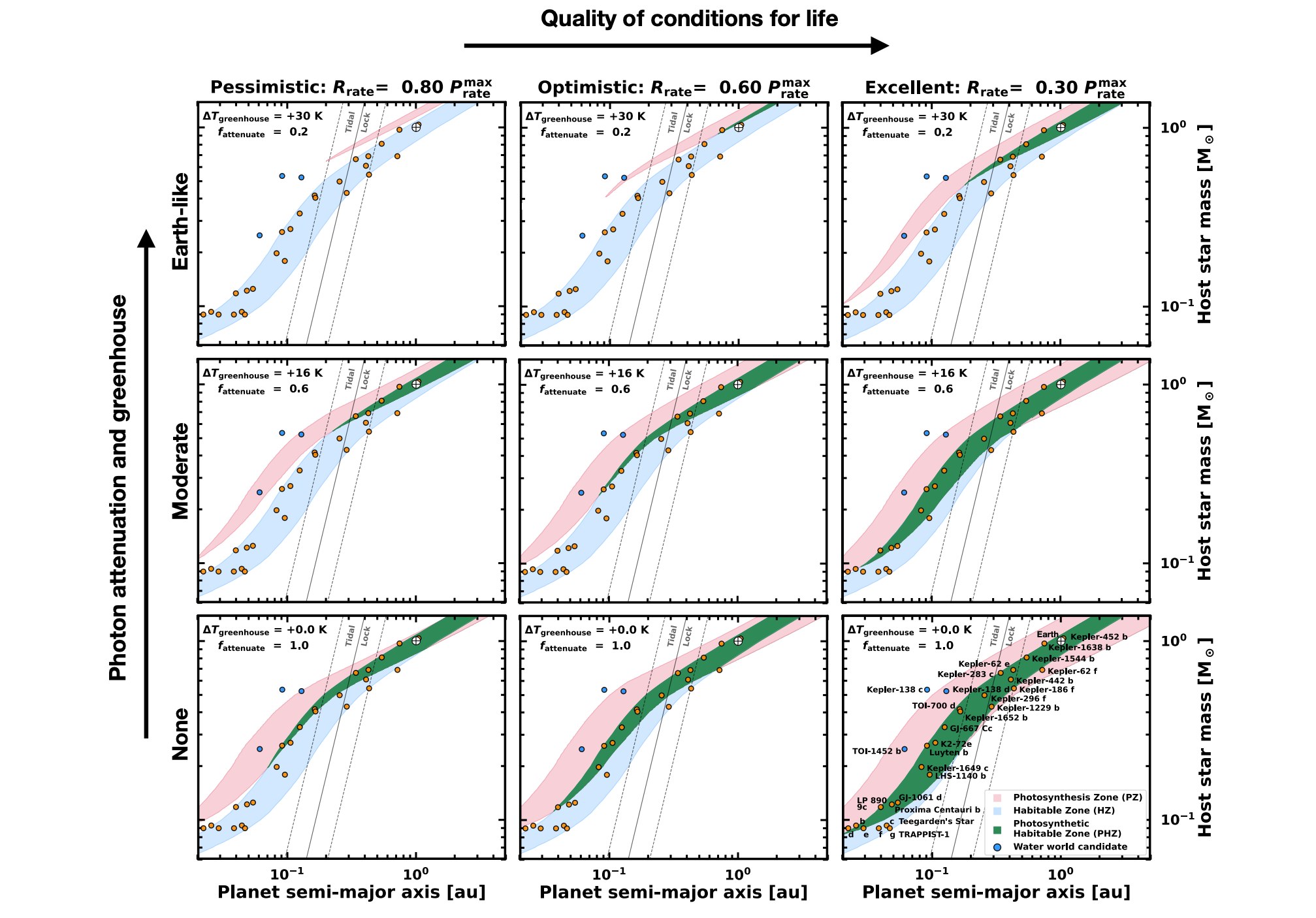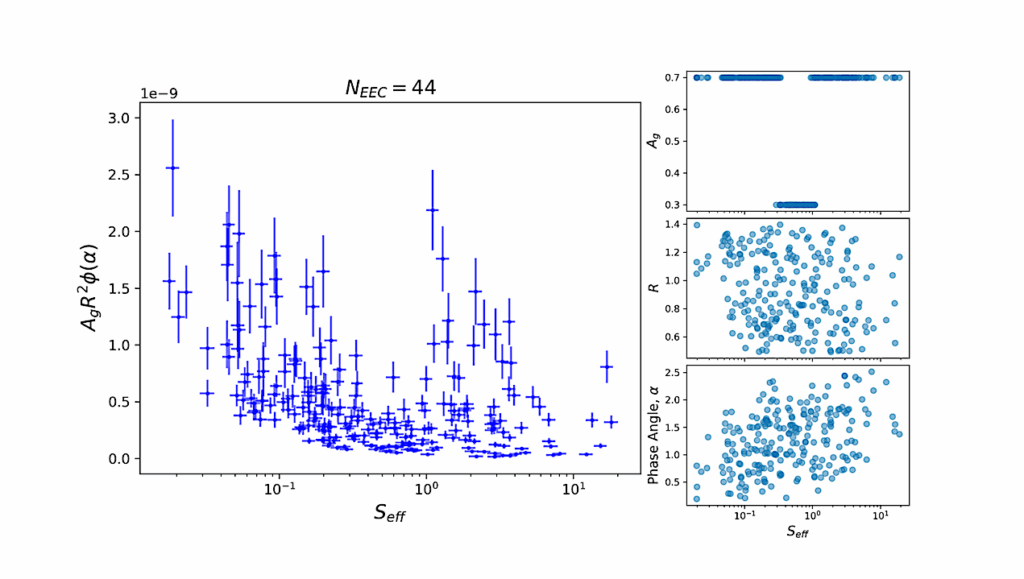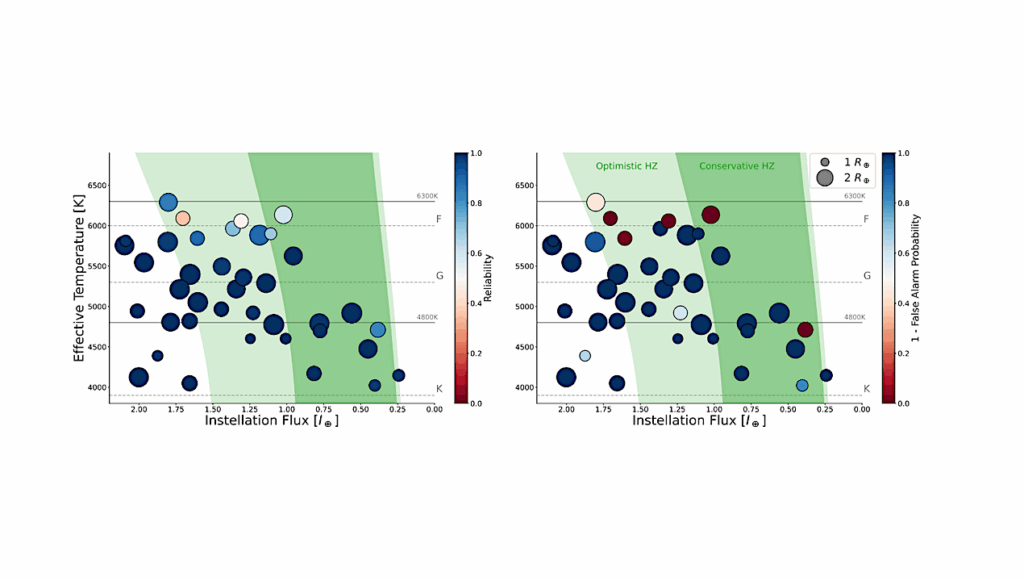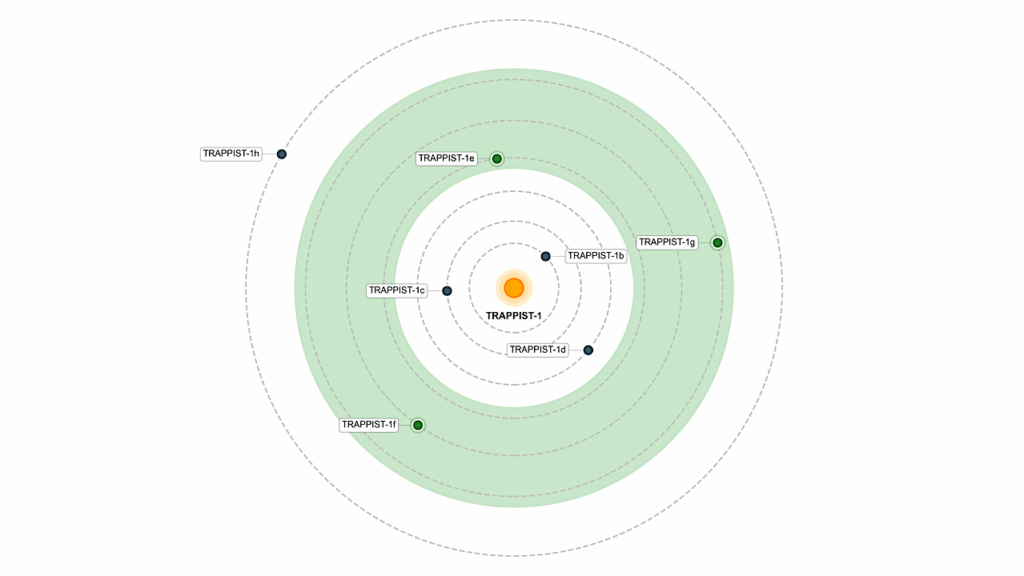A New Definition of Exoplanet Habitability: Introducing the Photosynthetic Habitable Zone

It may be possible to detect biosignatures of photosynthesis in an exoplanet’s atmosphere. However, such a detection would likely require a dedicated study, occupying a large amount of telescope time.
It is therefore prudent, while searching for signs of life that we may recognise, to pick the best target possible. In this work, we present a new region, the “photosynthetic habitable zone” – the distance from a star where both liquid water and oxygenic photosynthesis can occur. It is therefore the region where detectable biosignatures of oxygenic photosynthesis are most likely to occur. Our analysis indicates that in the most ideal conditions for life and no atmospheric and greenhouse effects, the photosynthetic habitable zone is almost as broad as the habitable zone.
On the other hand, if conditions for life are anything less than excellent and atmospheric attenuation and greenhouse effects are even moderate, the photosynthetic habitable zone is concentrated at larger separations around more massive stars. Such cases are also not tidally locked to their host star, which could result in planetary rotation periods similar to the Earth’s.
We identify five planets, Kepler-452 b, Kepler-1638 b, Kepler-1544 b and Kepler-62 e and Kepler-62 f, that are consistently in the photosynthetic habitable zone for a variety of conditions, and we predict their day lengths to be between 9 and 11 hours. We conclude that the parameter space in which we should search for signs of life is much narrower than the standard habitable zone.
C. Hall, P. C. Stancil, J. P. Terry, C. K. Ellison
Comments: 12 pages, 4 figures, submitted to APJL
Subjects: Earth and Planetary Astrophysics (astro-ph.EP)
Cite as: arXiv:2301.13836 [astro-ph.EP] (or arXiv:2301.13836v1 [astro-ph.EP] for this version)
Submission history
From: Cassandra Hall
[v1] Tue, 31 Jan 2023 18:27:00 UTC (12,995 KB)
https://arxiv.org/abs/2301.13836
Astrobiology








